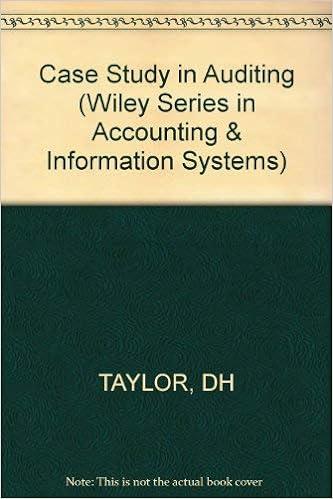Answered step by step
Verified Expert Solution
Question
1 Approved Answer
Audit Procedures for Initial Public Offerings ( IPOs ) : Initial Public Offerings ( IPOs ) involve the process of a privately held company offering
Audit Procedures for Initial Public Offerings IPOs:
Initial Public Offerings IPOs involve the process of a privately held company offering shares of its stock to the public for the first time. Auditors play a crucial role in ensuring the accuracy and reliability of financial information disclosed during the IPO process. Here's a brief overview of audit procedures for IPOs:
Due Diligence: Auditors conduct thorough due diligence to assess the company's financial health, accounting practices, and internal controls. This involves reviewing financial statements, historical performance, and potential risks associated with the IPO.
Verification of Financial Information: Auditors verify the accuracy and completeness of financial information presented in the IPO prospectus, including revenue, expenses, assets, liabilities, and equity. They ensure compliance with accounting standards and regulatory requirements.
Assessment of Internal Controls: Auditors evaluate the effectiveness of the company's internal controls over financial reporting to identify any weaknesses or deficiencies that may impact the reliability of financial information disclosed to investors.
Review of Offering Documents: Auditors review the offering documents, including the prospectus and registration statement, to ensure consistency and accuracy of financial disclosures. They provide assurance to investors regarding the reliability of financial information provided by the company.
Independent Verification: Auditors provide an independent verification of the company's financial position and performance to instill confidence among investors and underwriters participating in the IPO.
Objective Type Question:
In audit procedures for initial public offerings IPOs which of the following is a primary consideration for auditors to ensure the accuracy and reliability of financial information presented to investors?
A Reviewing historical performance
B Conducting due diligence
C Assessing internal controls
D Providing independent verification

Step by Step Solution
There are 3 Steps involved in it
Step: 1

Get Instant Access to Expert-Tailored Solutions
See step-by-step solutions with expert insights and AI powered tools for academic success
Step: 2

Step: 3

Ace Your Homework with AI
Get the answers you need in no time with our AI-driven, step-by-step assistance
Get Started


